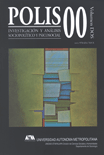El enfoque dramatúrgico en Erving Goffman
Keywords:
enfoque dramatúrgico, Goffman, interacción socialAbstract
En este artículo se analiza la perspectiva dramatúrgica utilizada por Erving Goffman en su estudio de la interacción social. Con este propósito se abordan tanto su enfoque dramatúrgico como su concepción del sí mismo (self) y su análisis de los marcos (frame analysis). Goffman aplica las metáforas teatrales con el propósito de representar la manera en que los individuos actúan y se presentan sus imágenes ante sí mismos y ante otros. La interacción social es observada en términos de una actuación (performance) o un papel representado frente a una audiencia. Goffman trató de establecer los códigos o marcos de significación mediante los cuales, en los rituales de interacción, se produce el encuentro entre las microestructuras de significado que componen la expresión de la persona y las macroestructuras de significado que componen la cultura. Esto se comprende a través del concepto de marcos, que son esquemas interpretativos que simplifican y condensan la realidad social, al seleccionar y codificar situaciones y eventos y relacionarlos con el medio en el que se desenvuelve el actor.Downloads
References
Alexander, J. (1988), "Introduction: Durkheimian Sociology and Cultural Studies Today", en Jeffrey Alexander, ed., Durkheimian Sociology: Cultural Studies, Cambridge University Press, pp. 1-21.
Bateson, G. (1955), "A theory of play and phantasy", en Psychiatric Research Reports 2, American Psychiatric Association, pp. 39-51.
Bourdieu, P. (1985), "Social space and the genesis of groups", en Theory and Society 14, núm. 6, noviembre, pp. 723-744.
Burke, K. (1969), "Introduction: The five key tercos of dramatism", en A Grammar of Motives, University of California Press, Berkeley y Los ángeles, pp. XV-XVIII.
Collins, R. (1988), "Theoretical continuities in Goffman's work", en Paul Drew y Anthony Wootton, eds., Erving Goffman: Exploring the Interaction Order, Northeastern University Press, Boston, pp. 41-63.
Charon, J. (1979), "Symbolic Interactionism: An Introduction, an Interpretation", an Integration, Prentice-Hall, Englewood.
De Erice, J. (1994), "Erving Gojfman. De la interacción focalizada al orden interaccional", Siglo XXI, España.
Durkheim, E. (1973), "La división del trabajo social", Schapire, Argentina [1895].
Durkheim, E. (1974a), "Las reglas del método sociológico", La Pléyade, Buenos Aires [1893].
Durkheim, E. (1974b), "El suicidio", Universidad Nacional Autónoma de México, México [1897].
Durkheim, E. (1995), "Las formas elementales de la vida religiosa", Coyoacán, México [1915].
Gamson, W. (1985), "Goffman's legacy to political sociology", Theory and Society, núm. 14, pp. 605-622.
Geertz, C. (1983), "Blurred genres: The refiguration of social thougth", en Local Knowledge, Basic Books, Nueva York, pp. 19-35.
Geertz, C. (1992), "La interpretación de las culturas", Gedisa, Barcelona.
Goffman, E. (1959), "The presentation of self in everyday life", Doubleday Anchor, Nueva York.
Goffman, E. (1974), "Frame analysis: an essay on the organization of experience", Harper and Row, Londres.
Heiskala, R. (1999), "From Goffman to semiotic sociology", en Semiotica, vol. 124, núm. 3-4, pp. 211-234.
Jameson, F. (1976), "On Goffman's frame analysis", en Theory and Society, núm. 3, pp. 119-133.
Jary D. y G. Smith (1976), "Frame Analysis", en Sociological Review, pp. 917-927.
Kendon, A. (1988), "Goffman's Approach to Face-to-Face Interaction", en Paul Drew y Anthony Wotton, eds., Erving Goffman, Exploring the Interaction Order, Northeastern University Press, Boston, pp. 14-40.
Lemert, Ch. y A. Branaman (1977), "The Goffman Reader", Blackwell, Malden, Mass.
MacCannel, D. (1983), "Erwing Goffman (1922-1982)", en Semiotica, vol. 45, pp. 1-33.
Manning, P. y B. Cullum-Swan (1992), "Semiotics and framing: examples", en Semiotica, vol. 92, núm. 3-4, pp. 239-257.
Mead, H. (1972), "Espíritu, persona y sociedad", en Paidós, Barcelona [1934].
Messinger, Sh. et al. (1962), "Life as theater: some notes on the dramaturgic approach to social reality", en Sociometry, núm. 25, pp. 98-110.
Turner, V. (1974), "Dramas, fields and metaphors", Cornell University Press, Ithaca y Londres.
Vester, H.-G. (1989), "Erving Goffman's Sociology as a Semiotics of Postmodern Culture", en Semiotica, vol. 76, núm. 3-4, pp. 191-203.
Wacquant, L. (1993), "From ruling class to field of power: Interview with Pierre Bourdieu on La noblesse d'État", en Theory, Culture á Society, núm. 10, pp. 19-44.



